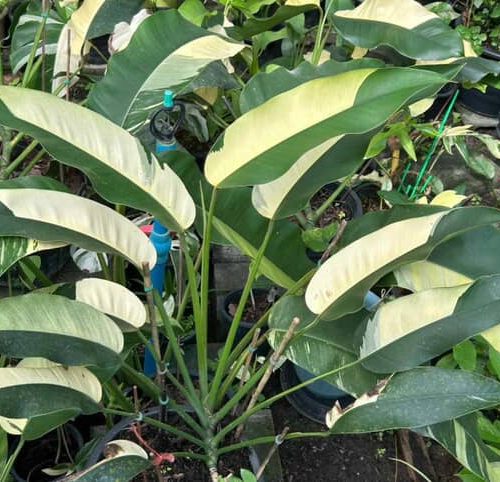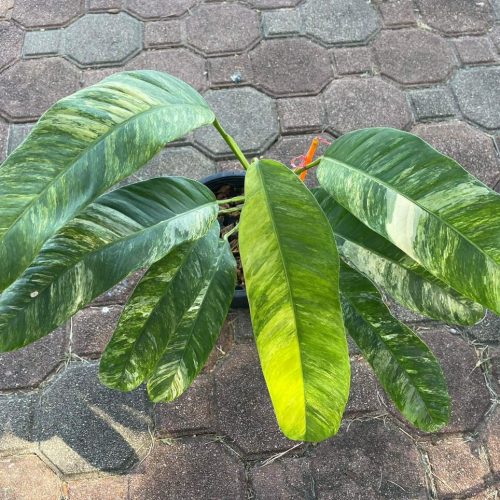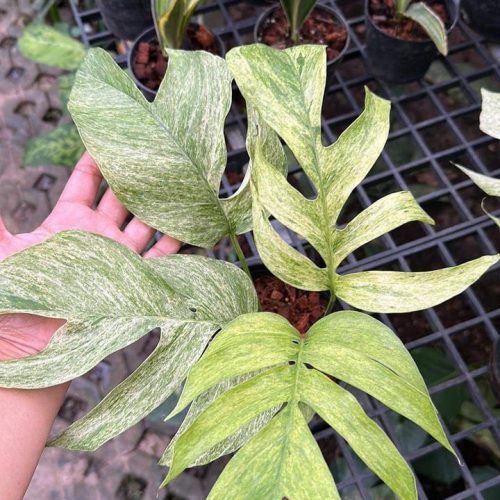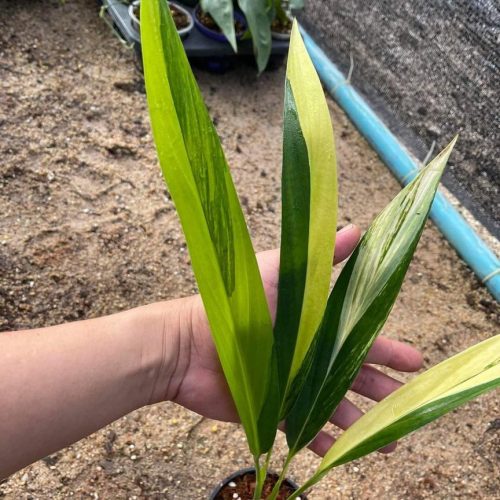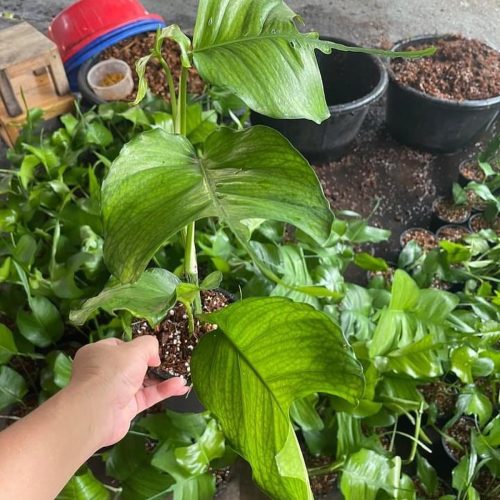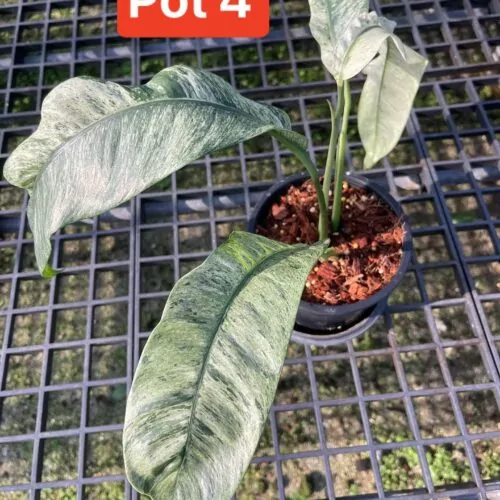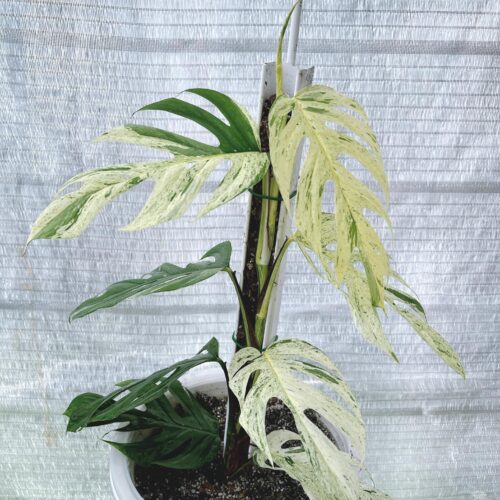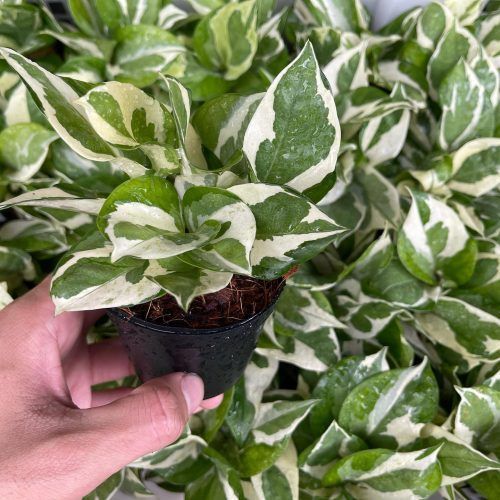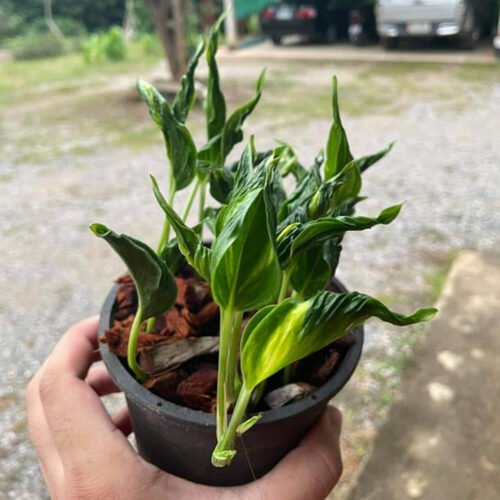The Epipremnum Skeleton Key is a unique and fascinating plant that has captured the attention of houseplant enthusiasts. Known for its distinctive leaf shape, this plant can add a touch of exotic beauty to any indoor garden. This comprehensive guide will provide you with all the information you need to grow and care for the Epipremnum Skeleton Key successfully.
Introduction
The Epipremnum Skeleton Key is a member of the aroid plant family, which includes popular varieties like Philodendron, Monstera, and Anthurium. Native to the tropical regions of Southeast Asia, this plant is prized for its unique, key-shaped leaves that develop as the plant matures. Similar to Aglaonema and Syngonium, the Epipremnum Skeleton Key is not only beautiful but also relatively easy to care for.
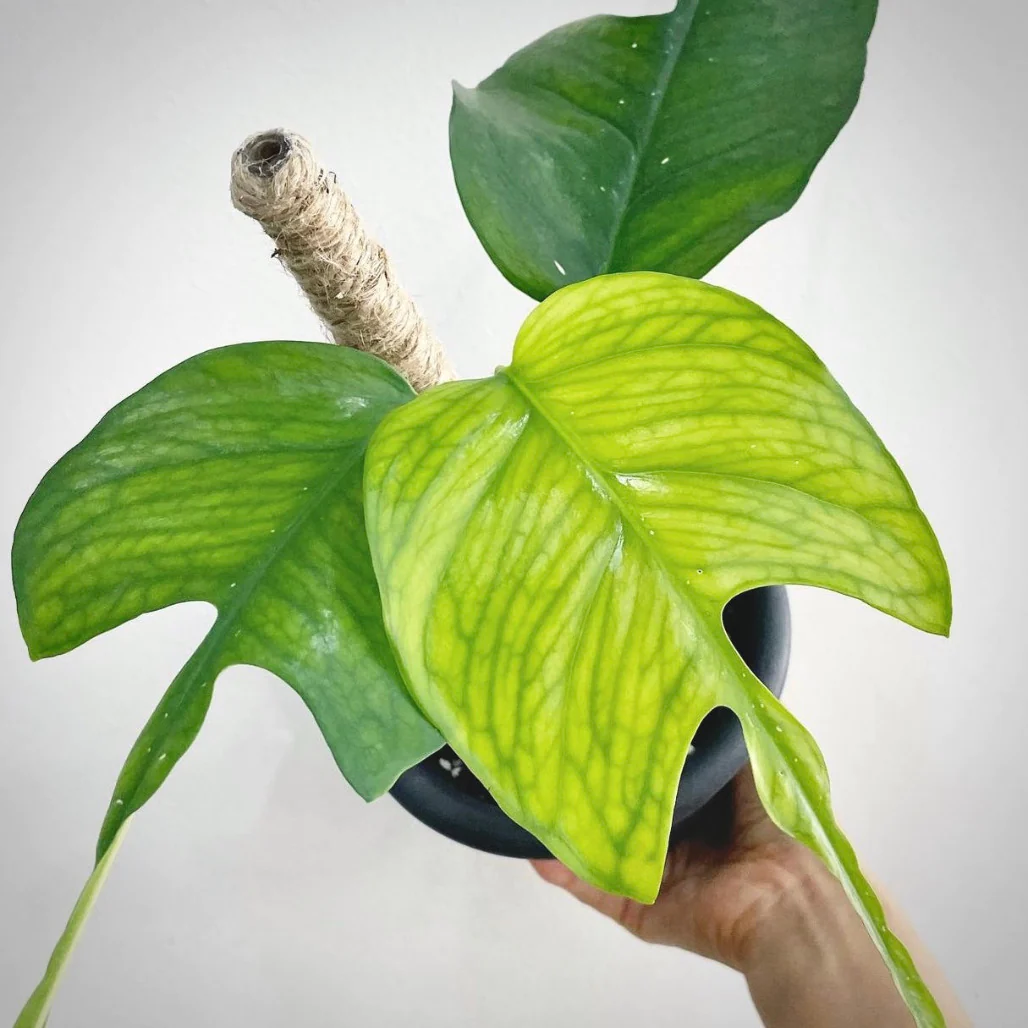
Origin and History
The Epipremnum Skeleton Key is a man-made hybrid that was first created by noted houseplant breeder Variegatus Select in the early 2010s. Using special propagation techniques, Variegatus Select crossed two different pothos cultivars – Epipremnum Aureum and Epipremnum Pinnatum – to produce plants with leaves exhibiting the elongated, fiddle-shape of E. Pinnatum combined with the bold variegation of E. Aureum.
Discovery and Breeding
The first Epipremnum Skeleton Key plants were discovered by accident at Variegatus Select after an attempt to propagate E. Pinnatum. Out of hundreds of normal pothos plants, a single seedling emerged with long, tapered green and white leaves that resembled a skeleton key.
Release and Popularization
Impressed by its uniqueness, Variegatus Select spent several years stabilizing the mutation through careful propagation before officially unveiling Epipremnum Skeleton Key at industry trade shows in 2016. Its distinctive looks quickly earned attention and demand skyrocketed as supplies were very limited initially. Today, its popularity endures thanks to increased production.
For those curious about the broader variety and characteristics of different Epipremnum plants, you might find insights in “5 Stunning Epipremnum Varieties: A Must-See Guide!“. This guide delves into the diverse world of Epipremnum, highlighting their unique features and origins.
Appearance and Growth Characteristics
The Epipremnum Skeleton Key is prized for its slender, pointed leaves that can reach up to 10 inches long. Their eye-catching variegation displays irregular white and light green marbling against a dark green background. In ideal conditions, the plant forms a spreading vine.
Leaf Shape and Variegation
The leaves of the Epipremnum Skeleton Key have an elongated violin or skeleton key shape, widest in the middle and tapering to a narrow point at both ends. Variegation occurs as blotches, stripes, and streaks of white and pale green distributed randomly across the dark emerald leaves.
Growth Habit
An evergreen vining plant, Epipremnum Skeleton Key grows long stems and climbs or trails gracefully when provided proper support. Stems can reach up to 3 feet long andnew leaves emerge in pairs from nodes along the wiry vine. Growth rate is moderate to fast in optimal environments.
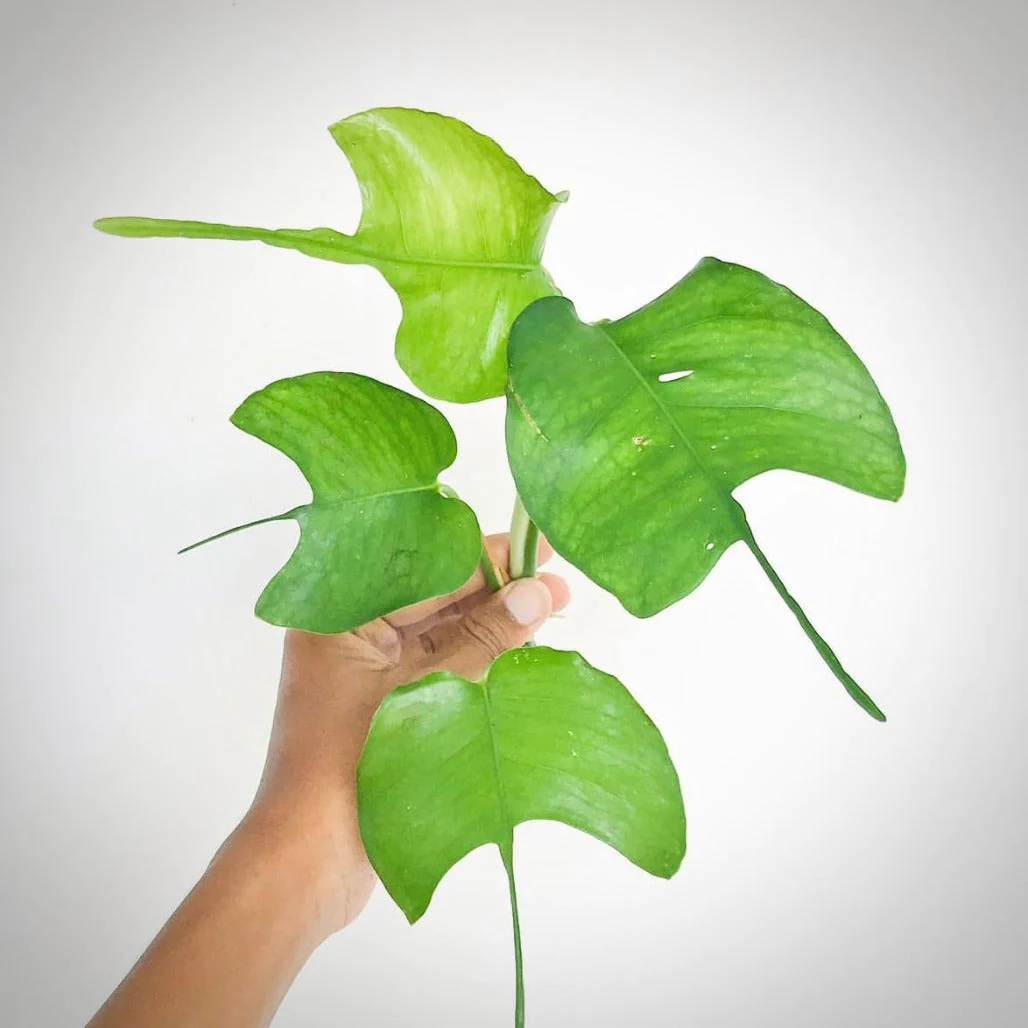
Cultivation Requirements
While easier to grow than many rare plants, Epipremnum Skeleton Key does require certain growing conditions to thrive indoors long-term. Factors like lighting, humidity, watering frequency, and temperature should be tailored to this plant.
Light Requirements
Epipremnum Skeleton Key grows best in bright, indirect sunlight. Some direct sun is fine but more than 2-3 hours causes leaf scorching. Insufficient light leads to smaller leaves and less vibrant variegation. East or west-facing windows work wonderfully to provide its preferred level of light.
Watering and Humidity
Allow the top inch of soil to dry out between waterings and maintain average room humidity between 40-60%. While pothos enjoy moist soils, Epipremnum Skeleton Key is prone to root rot if overwatered. Use well-draining soil and pots with holes for drainage. Mist leaves occasionally for extra humidity.
Temperature Tolerance
Ideal temperatures for Epipremnum Skeleton Key are between 60°F and 80°F year-round. Avoid drafty areas as cold damage or leaf curling will occur below 50°F. As a tropical plant, it also declines above 85°F if heat stress sets in over time. Monitor growth in hot or cold spots and adjust its placement accordingly.
To master the care of this and other Epipremnum varieties, be sure to check out “5 Easy Steps to Lush Epipremnum Growth: Master Pothos Care Today!“, a comprehensive resource offering tips and tricks for optimal growth and care.”
Epipremnum species are the most sought after by aroid plant lovers
Tips for Healthy Growth
Caring properly for Epipremnum Skeleton Key ensures lush growth, brilliant variegation in the leaves, and a spectacular display as a hanging basket or trailing potted plant over time. Here are some key tips:
Provide Support for Optimal Growth
Install a trellis, moss pole, or other support structure for the vine to climb to showcase its graceful, cascading growth to best effect. Tie stems gently in place as needed. Prune aggressively as required to control size.
Choose an Appropriate Pot or Planter
Pick containers with drainage holes, using orchid pots or hanging baskets to allow excess water to escape. Pot in a quality indoor plant soil amended with perlite or bark. Divide rootbound plants into smaller pots to encourage new growth.
Monitor Light and Rotation
Rotate pots periodically for even sunlight exposure so all sides develop evenly. Watch for signs of too much light like scorching or too little light such as smaller leaves. Adjust its situation over time for best results.

Common Issues with Epipremnum Skeleton Key
When requirements are met, Epipremnum Skeleton Key shows few issues. However, there are some potential problems to watch for with these plants:
Insufficient Light
Without enough sunlight, variegation fades, plant growth slows, and fewer leaves emerge over time. Supplement with grow lights if natural light is inadequate.
Overwatering
Excess moisture causes root and stem rot leading to yellow, drooping foliage. Allow soil to partly dry out before watering again. Repot immediately if roots appear dark brown and mushy.
Pests
Spider mites, mealybugs, and scale insects may appear on the foliage. Treat early with insecticidal soap sprays before infestations get severe. Be sure to reach undersides of leaves where pests hide.
Dive into “Is Your Pothos Plant Safe? 5 Key Facts to Know!“ to learn about the safety aspects of Epipremnum plants and how to prevent common problems.
Conclusion
With its extraordinarily long, violin-shaped leaves decorated with captivating variegation, the Epipremnum Skeleton Key makes a sensational addition to any plant collection. Though slower growing than standard pothos, its tropical vining habit adds beautiful dimension and contrast to indoor displays. Provided adequate bright, indirect light and protection from overwatering, this exotic houseplant succeeds for years as an exceptionally striking accent piece. Its soaring popularity is sure to continue as more plant enthusiasts discover the charms of growing Epipremnum Skeleton Key.
FAQs
- Can Epipremnum Skeleton Key tolerate low light? Yes, it can tolerate low light, but it thrives best in bright, indirect light.
- What is the best soil mix for Epipremnum Skeleton Key? A mix of peat moss, perlite, and potting soil works best for this plant.
- Does Epipremnum Skeleton Key flower? Yes, but it rarely flowers indoors. With the right conditions, you might see it bloom.
- How often should I repot Epipremnum Skeleton Key? Typically, it’s best to repot every two years or when the plant outgrows its pot.
- How do I propagate Epipremnum Skeleton Key? You can propagate it through stem cuttings. Simply place a stem cutting in water or moist soil and wait for roots to develop.

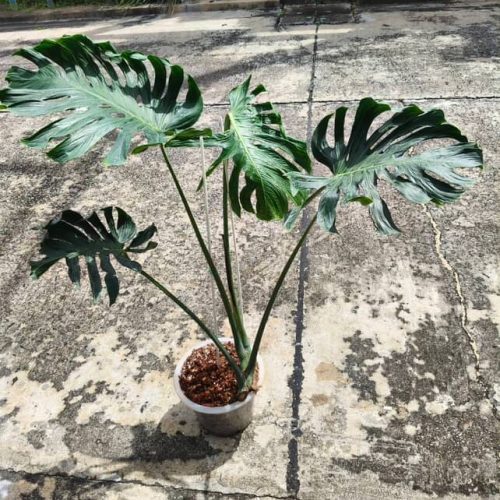
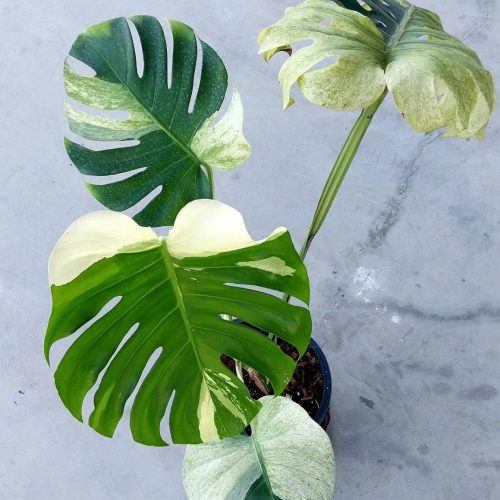



![12x Monstera Borsigiana Albo half leaves variegata [3-4 leaves]](https://greenboog.com/wp-content/uploads/2024/10/Monstera-Borsigiana-Albo-half-leaves-variegata-1-500x500.jpg)
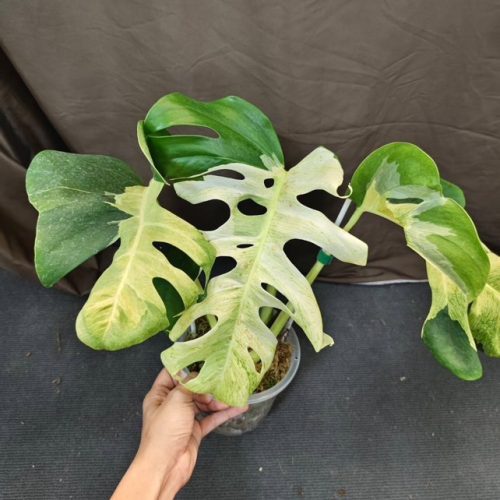

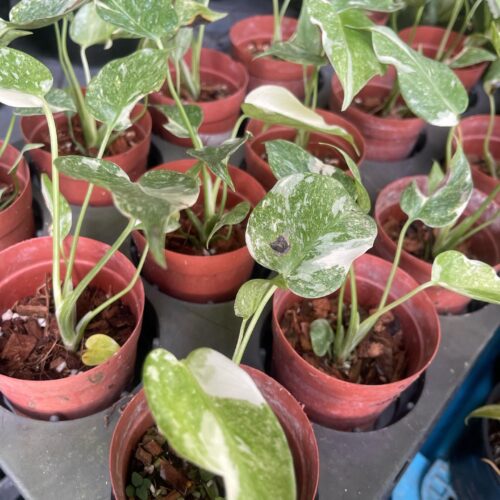
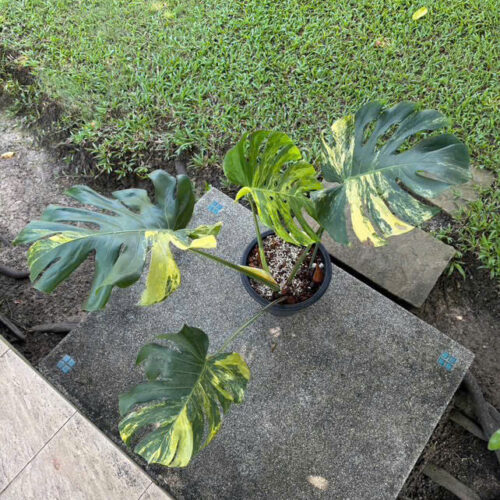
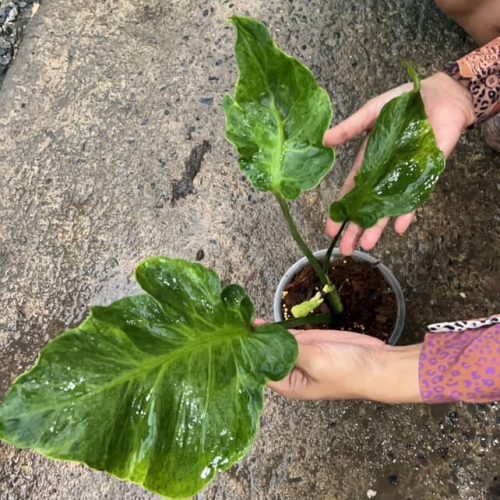
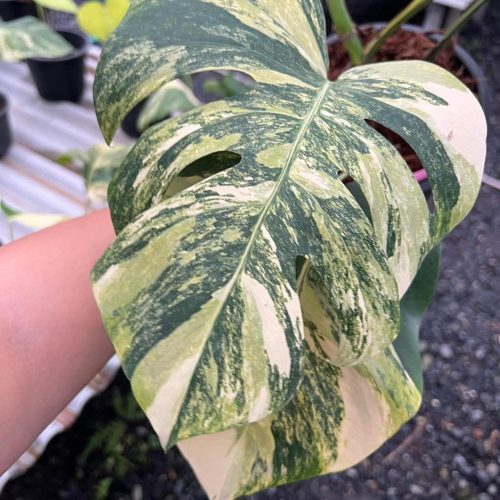

![10 Pots x Monstera Aurea Variegated / Mix Aurea tri color 3-4 leaves [well variegated]](https://greenboog.com/wp-content/uploads/2024/08/Monstera-Aurea-Tri-color-500x500.jpg)
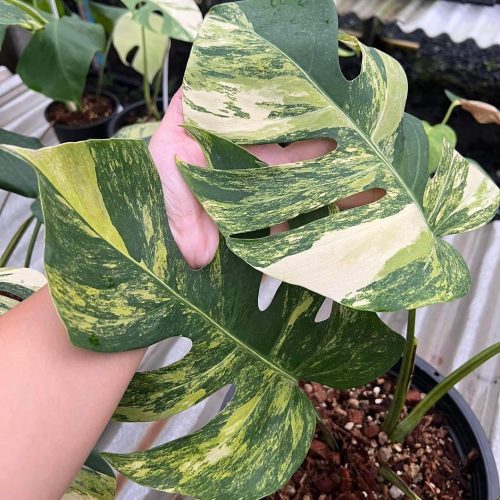
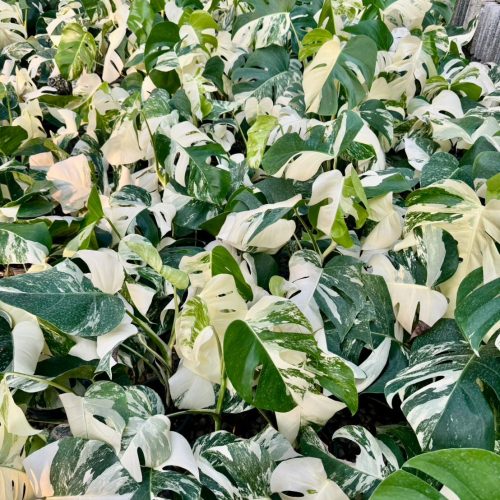
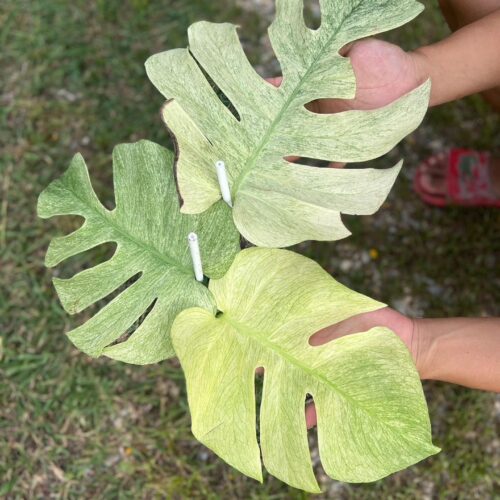
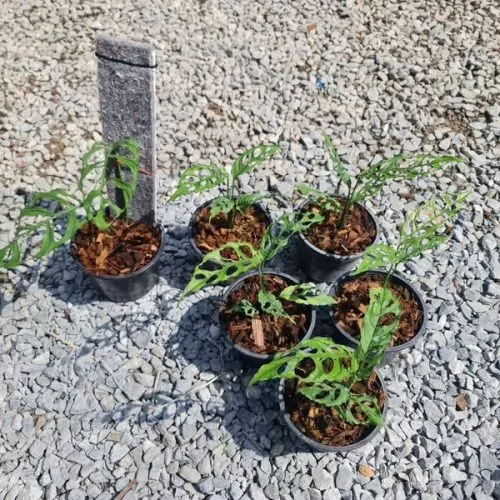
![[SALE] 10 Pots x Monstera Aurea Variegated 3-6 leaves [Medium size]](https://greenboog.com/wp-content/uploads/2025/01/Monstera-Aurea-variegated-4-6-leafs-500x482.jpg)

